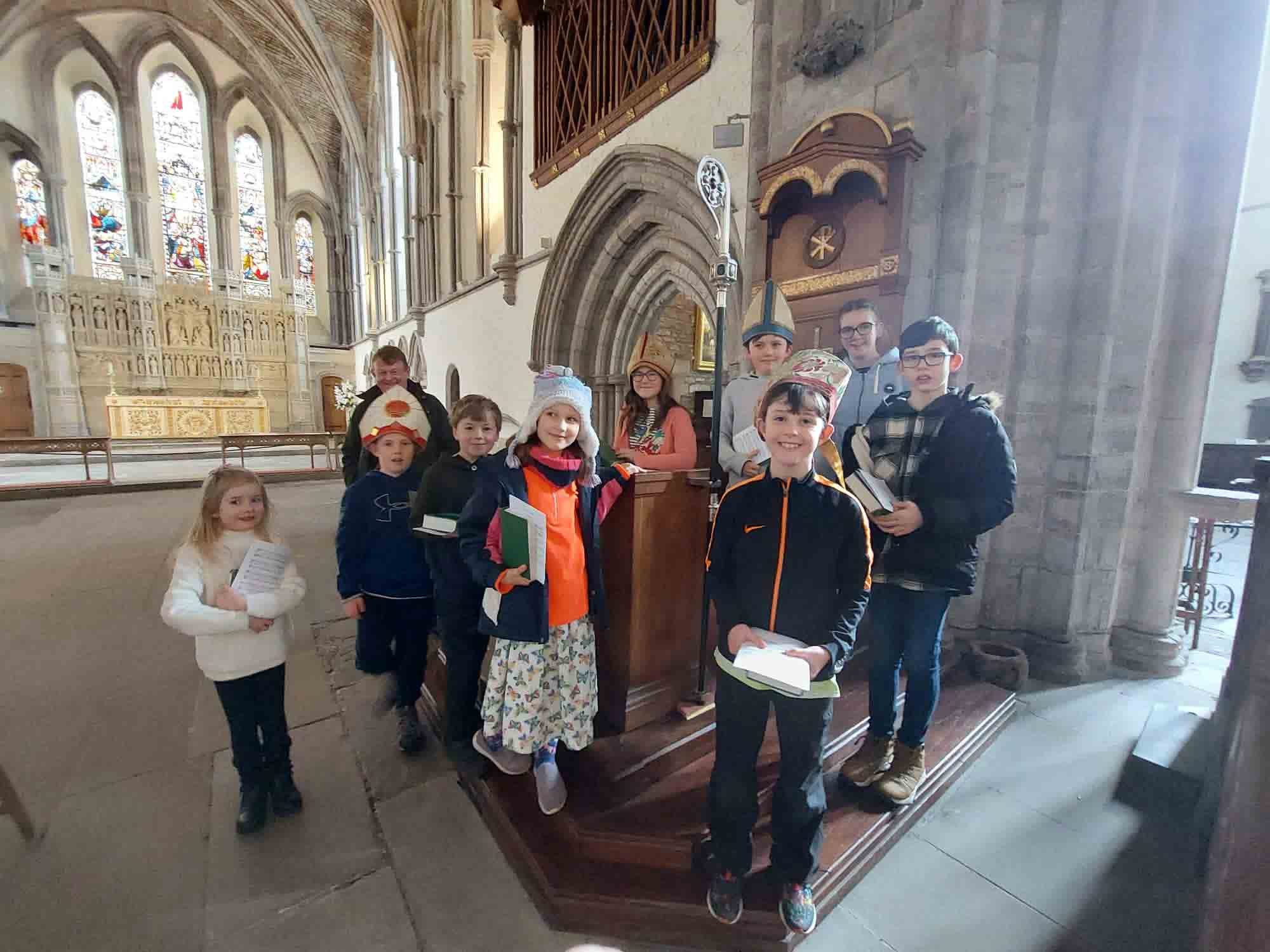
People | Passion | Priory
Activities and Interpretation
Developing how we want to interpret the Cathedral and formulating an activities and events plan to entertain, inform, and interest our visitors is an exciting part of the project. We have appointed Headland Design to lead these areas and they are speaking with an enormous range of people and groups to find out what people want from their visit. This will be summarised in an Interpretation Plan and an Activities Plan, which will form part of our Round 2 submission. Everything is still at a development stage but there are some broad outlines already emerging.
It is important that our interpretation and activities reach the widest possible group of people and cater for all interests. To interpret our deep past, stretching back almost 1,000 years, is not easy but, after much consultation with local stakeholders, special interest groups, the Cathedral’s congregation, staff, and volunteers via a series of workshops and conversations, we have coalesced our thoughts around seven key themes, explored below.
Pilgrimage and veneration
The Priory church of St John the Evangelist was considered a pilgrimage site in the medieval period and attracted droves of pilgrims who came to venerate the Golden Rood. Brecon priory belonged to the Benedictine order of monks and the first Prior was Roger, a monk from Battle Abbey in Sussex, and confessor of the Norman knight who built the church, Bernard de Neufmarché (conqueror of the Welsh kingdom of Brycheiniog). Neufmarché gifted the Priory to the Benedictine Order and it became a daughter house of Battle Abbey. The site’s monastic history is reflected through traces of the Golden Rood screen, masons’ marks, the Cordwainers’ Chapel and the cresset stone, one of many which would have once lit the monks’ way around the monastic complex as they attended the divine offices during hours of darkness.
Traces of the medieval
The stories of Brecon Cathedral’s medieval past are reflected tangibly in the material traces left behind, which offer glimpses into its beginnings as a Benedictine Priory in the Norman period through to the major cultural and religious shift caused by the Dissolution of the Monasteries in the mid-sixteenth century. The walled Cathedral close, a survival from the Priory, singles the site out as unique within Wales.
Agincourt – “We band of brothers…”
Brecon has links to the Welsh archers who fought for Henry V at the Battle of Agincourt, evidenced through a stone in the Cathedral believed to have been used to sharpen their arrows and a roll of honour naming the Breconshire archers who served. Local knight, Sir Richard Vaughan of Bredwardine, who died at the Battle, is commemorated in the Cathedral, and his descendants are memorialised in a sixteenth-century wooden tomb effigy in the north aisle.
Garrison town
Brecon has been a garrison town for over 1,000 years and the Cathedral bears the scars of conflicts fought close by and far way through evidence of damage caused by Cromwellian forces during the Parliamentarian Republic to Colours relating to international battles in which the South Wales Borderers served. The town continues to have a strong connection to the military, with the Brecon Barracks being the site of the army’s administrative headquarters in Wales and Dering Lines being a site of important infantry training. The Cathedral is the burial site of a Crimean War veteran and Victoria Cross holder and a Napoleonic prisoner of war who settled in the area. The Havard Chapel has been a regimental chapel for almost 100 years and the Cathedral has close links with the nearby Royal Welsh Regimental Museum.
In Remembrance
Brecon Cathedral holds a wealth of memorials within its walls, and in its grounds. These memorials range from grand tombs and beautiful stained-glass windows to elaborate and modest wall-mounted plaques. Each memorial has a story to tell about those remembered and, in some cases, those who were mourning their loss and those who were tasked with creating them.
The Church in Wales
The Church in Wales was established in 1920. The first Bishop of Swansea and Brecon was Edward Latham Bevan. As the site of his memorial, and that of several other former Welsh bishops, Brecon Cathedral has a strong and important link to the history of the Church in Wales.
Making a difference
Local people with a connection to the Cathedral have made a difference through campaigning and fighting for social justice. They have left their mark on the building through memorials, books about the site, and the commissioning of additions to its fabric.
Traditional skills and crafts
The historic fabric of the Cathedral reveals the range of traditional skills and crafts employed in the building, maintenance, repair, and remodelling of the complex over time, which continues into the modern era and makes the survival of such skills essential to the preservation of significant heritage buildings. The Cathedral once also housed the Guild Chapels, one of which still survives. One of the aspects of the project of which we are most proud is training for stone tile roofers leading to an NVQ Level 3 qualification. We hope these early-career apprentices will be the workforce carrying out the repairs to the west roofs in a future project.









